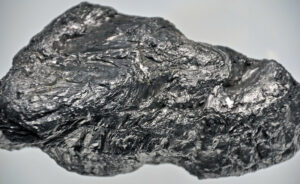Table of Contents

Introduction
Hybridization occurs when atomic orbitals are mixed to form new atoms. New atomic orbitals hold the same number of electrons as in the past. The strengths and features of the new integrated orbitals are ‘average’ of original orbitals that are not included. The concept of mixing was introduced because it was a good reason why all the C-H bonds in methane-like molecules are the same.
What is the Hybridization of Graphite?
The hybridization type of graphite is sp². The typical electronic suspensions of carbon are 1s², 2s², and 2p², where four valence electrons are placed in s and p orbitals. During the Hybridization process,’s’ orbitals combine with orbitals’ p ‘to form a hybrid, i.e., sp². In graphite, each carbon atom will form a bond with the other three carbon atoms. Combined atoms are arranged in hexagonal sequences. Thus, graphite has different properties because it has layers of weak energy within it.
In addition, each carbon atom consists of a single, non-bonded outer electron that becomes delocalized.
Graphite Formula in Chemistry
The graphite formula in Chemistry is C. It is a Graphite chemical formula that represents the ratio or properties of elements in an image structure.
Graphite Bond Angle
Graphite, also known as black lead or plumbago, is an allotrope of a crystalline form of carbon. The atomic chain in carbon on graphite is very different from that of diamonds. In Graphite, each carbon atom is grouped together by another atom. All 120⁰ graphite bond angles are expected only if three pairs of electron bonds are surrounded by each other.
Hybridization of Diamonds
Electronic carbon suspensions are 1s², 2s², and 2p², that is, four valence electrons set in orbitals ‘s’ and ‘nop’. By keeping the idea of creating bonded diamond bonds, the ‘s’ orbital joins the other three orbital ‘p’ to form an sp³. Thus, four valence electrons are distributed evenly between sp³ orbitals when each orbital points to one of the four corners of the tetrahedron.
The tetrahedral structure of the diamond and the high-density charge provide stability and bond strength. Therefore, all diamond bonds have the same length (1.54⁰A) and the same bond angles (109.47⁰).
Important Points to Remember
‘S ‘orbital merges with’ p ‘orbital to form an sp² hybrid orbital in Hybridization.
Each carbon atom is joined by three other atoms by a bond.
Carbon atoms form layers with a four-dimensional atomic structure.
Graphite Bond Angles and Molecular Geometry
The geometry of the graphite molecule is a triangular plan with a bond angle of 120⁰. The three bonds connected to each carbon atom in the graphite tend to go farther to reduce irritation between the pair of electrons falling on the vertices of the triangle.
Graphite is composed of atoms of carbon that are composed of hexagonal rings that have six members. The edges of these rings are connected to one another. The unlimited sequence of composite benzene rings can be used to model layers for composite rings (excluding hydrogen atoms). In these array spaces, carbon atoms are sp2-hybridized. Each carbon atom is connected to three other types of sp2 orbital model, the other three carbon atoms in the case of graphite. The binding angle between adjacent carbon atoms is 120 degrees in this binding mode. The individual graphene layers are made up of these “ring arrays,” packed in large sheets of carbon atoms. In the plane of the plane, the length of the carbon-carbon bond is 1,418. Graphene layers are stacked one on top of another in a hexagonal 4-axis system where graphite shines, in line with the crystallographic axis “C”.
Atoms of graphite crystal carbon atoms are sp2-hybridized.
Two binding sections are supported by carbon atoms: the sigma part and the pi part.
What does Graphite Hybridization include?
Hybridization in graphite is a type of sp2. Carbon power configurations are 1s2, 2s2, 2p2, and four valence electrons are distributed across all s and p orbitals. The orbital meets p orbital at the time of incorporation to form sp2 hybridization. In graphite, each carbon atom forms bonds associated with three other carbon atoms. Carbon hybridized atoms accumulate in hexagonal layers at various levels. The layers, on the other hand, have a weaker texture between them, giving different graphite properties.
Chemistry Formula Graphite
In chemistry, the graphite formula says C. The ratio or placement of elements in an image structure is represented by the chemical formula of graphite.
Important Things to Remember
- The orbital meets p orbital to produce sp2 hybrid orbitals when mixing occurs.
- Covalent bonds connect each carbon atom to the other three carbon atoms.
- Layers of carbon atoms have a hexagonal arrangement of atoms.
Graphite has an sp2 type of hybridization. The typical electronic configuration of carbon is 1s2, 2s2, 2p2, where four valence electrons are distributed in s and p orbitals. During mixing, the orbital meets orbitals to perform sp2 hybridization. Each carbon atom will form bonds associated with three other carbon atoms in graphite. Carbon hybridized atoms are arranged in different layers where they are arranged in a hexagonal arrangement. However, the layers have a weak strength between them and this gives different graphite structures.
Also read: JEE Advanced Sample Papers
FAQs
What is Carbon Hybridization, and how does it work?
Carbon Hybridization- The sp2 carbon atom is hybridized when connected to three atoms (two single bonds and one double bond), forming a horizontal or triangular arrangement with 120 angles ° between bonds.
What is SP2 Hybridization, and how does it work?
The One and P2 orbitals of the atom are mixed in an sp2 compound, which involves the activation of one electron from the orbital to one of the 2p atomic orbitals. When these atomic nuclei are assembled, three new hybrid orbitals of similar energy are formed.








